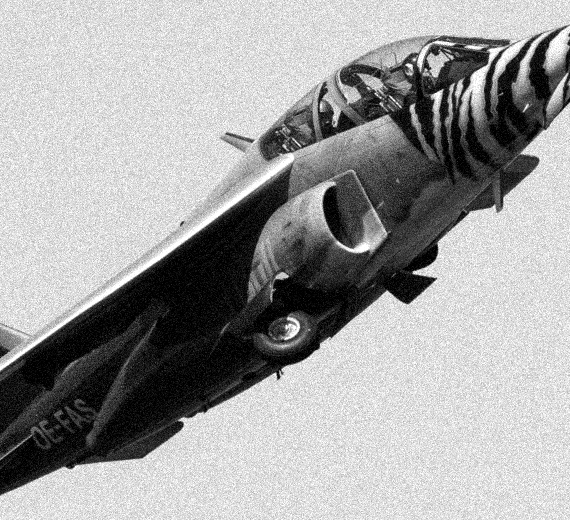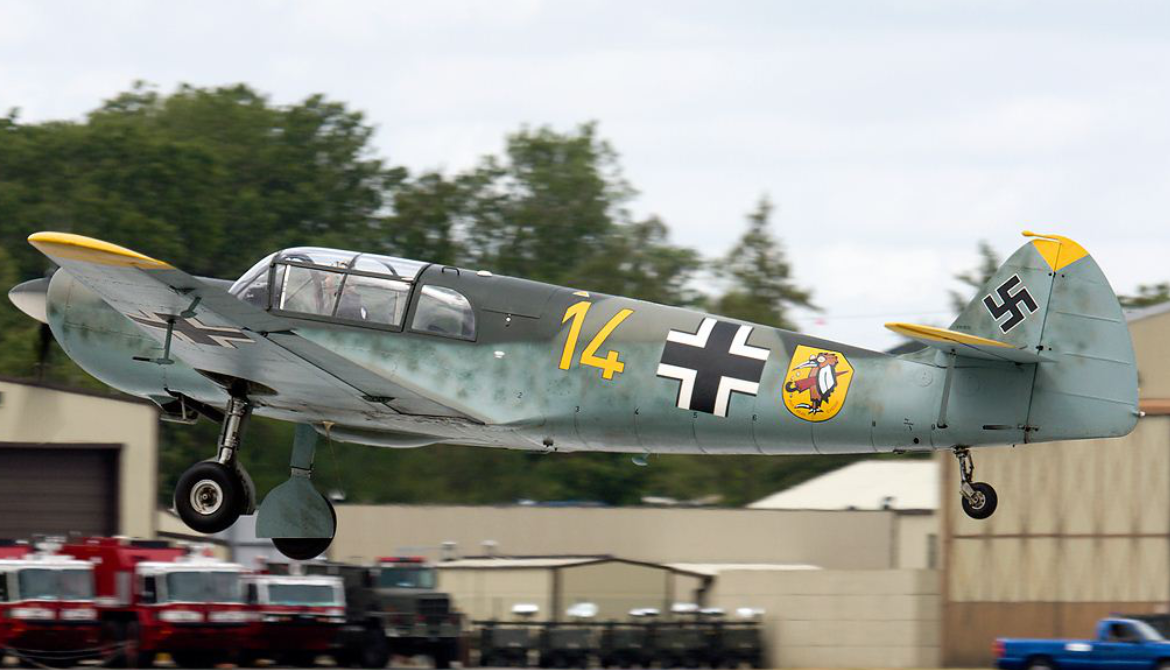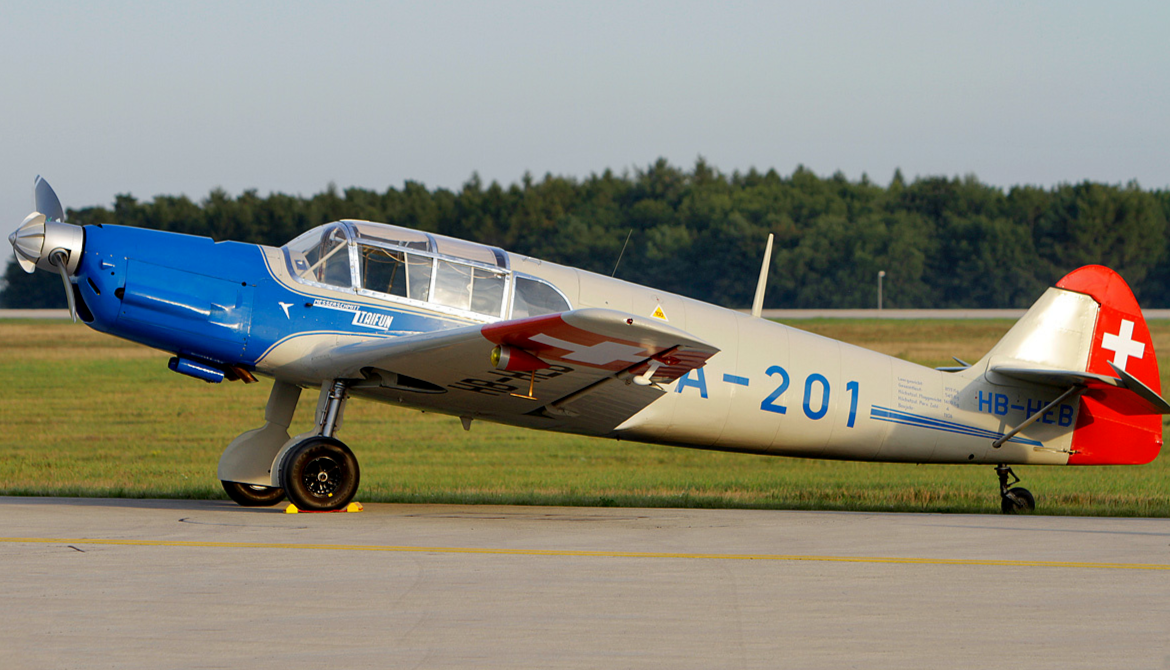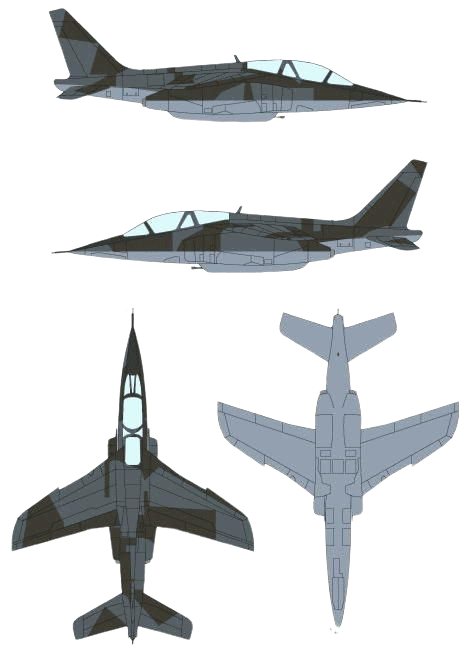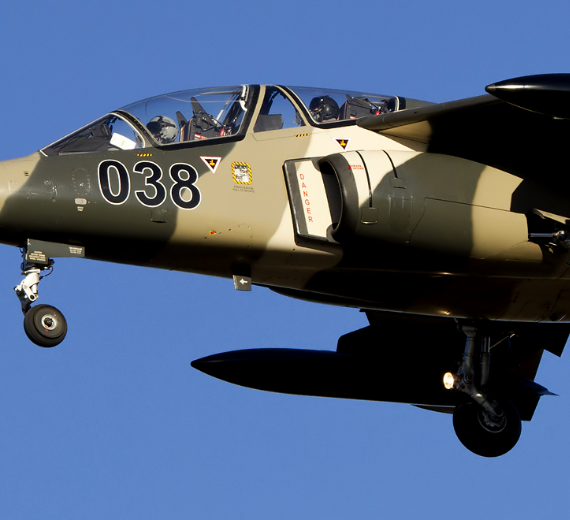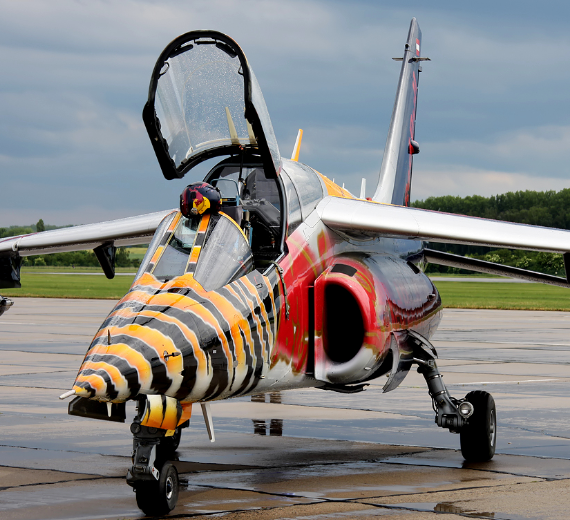Dassault/Dornier
Alphajet TA-501
 |
|
| An Alpha Jet of the French Air Force | |
| Role | Light attack and advanced trainer aircraft |
|---|---|
| National origin | France/Germany |
| Manufacturer | Dassault Aviation/Dornier Flugzeugwerke |
| First flight | 26 October 1973 |
| Introduction | 4 November 1977 |
| Status | In service |
| Primary users | French Air and Space Force Nigerian Air Force Egyptian Air Force Royal Thai Air Force |
| Produced | 1973–1991 |
| Number built | 480 |
.
History Dassault Aviation/Dornier Flugzeugwerke
Dassault/Dornier Alpha Jet TA-501

The Dassault/Dornier Alpha Jet is a light attack jet and advanced jet trainer co-manufactured by Dassault Aviation of France and Dornier Flugzeugwerke of Germany. It was developed specifically to perform trainer and light attack missions, as well as to perform these duties more ideally than the first generation of jet trainers that preceded it. Following a competition, a design submitted by a team comprising Breguet Aviation, Dassault Aviation, and Dornier Flugzeugwerke, initially designated as the TA501, was selected and subsequently produced as the Alpha Jet.
Both the French Air and Space Force and German Air Force procured the Alpha Jet in large numbers, the former principally as a trainer aircraft and the latter choosing to use it as a light attack platform. As a result of post-Cold War military cutbacks, Germany elected to retire its own fleet of Alpha Jets in the 1990s and has re-sold many of these aircraft to both military and civilian operators. The Alpha Jet has been adopted by a number of air forces across the world and has also seen active combat use by some of these operators.
Design

The Alpha Jet is a light twin-engine aircraft equipped with an intentionally simple airframe despite the performance delivered. Both the leading edges and air intakes are fixed; while the aerodynamic shape of the aircraft, which was developed with the aid of computer aided design (CAD), conforms with the area rule. Fully powered controls are used, comprising a dual-hydraulic systems and load-factor limited dynamic feel system arrangement attached to conventional flight control surfaces. The cockpit is pressurised for greater comfort during training. The Alpha Jet is designed to accommodate ten-minute turn around times with minimal ground equipment, using features such as pressurised single-point refueling, ladder-less entry/exit of the cockpit, and a ten-hour endurance of the liquid oxygen system.
The Alpha Jet was designed to perform a diverse range of roles. The principal users of the type, Germany and France, operated their Alpha Jets in different capacities, the former as a ground attack platform and the latter as a trainer aircraft. Beyond performing different roles, the Alpha Jet fleets of France and Germany noticeably differed in their specification and equipment; German aircraft were fitted with a more extensive weapon-aiming system, a different fuel system, a yaw damper, different brakes, nosewheel steering, an arrester hook, and Stencel ejector seats in place of Martin-Baker. According to aerospace publication Flight International, the majority of the specialised equipment used on the ground attack-orientated variant of the Alpha Jet was provided by German firms
0
KmCeiling
0
KmCombat RANGE
0
Km/hAircraft Speed
0
Max Crew
Photo Gallery
Dassault Aviation/Dornier Flugzeugwerke
Dassault/Dornier Alpha Jet


Grob Aircraft, formerly Grob Aerospace
Dassault/Dornier Alpha Jet TA-501
General Info
-
-
- Crew: 2
- Length: 13.23 m (43 ft 5 in)
- Wingspan: 9.11 m (29 ft 11 in)
- Height: 4.19 m (13 ft 9 in)
- Wing area: 17.5 m2 (188 sq ft)
-
Powerplant
-
-
- Empty weight: 3,515 kg
- Gross weight: 5,000 kg
- Max takeoff weight: 7,500 kg
- Fuel capacity: 1,520 kg (3,351 lb)
- Powerplant: 2 × SNECMA Turbomeca Larzac 04-C5 turbofan engines, 13.24 kN (2,980 lbf) thrust each
-
Performance
- Maximum speed: 1,000 km/h (620 mph, 540 kn) at sea level
- Stall speed: 167 km/h (104 mph, 90 kn) (flaps and undercarriage down)
-
-
-
- 216 km/h (134 mph; 117 kn) (flaps and undercarriage up)
-
-
- Combat range: 610 km (380 mi, 330 nmi) lo-lo-lo profile, gun pod, underwing weapons and two drop tanks
-
-
- Service ceiling: 14,630 m
- g limits: +12 / -6.4 (Ultimate)
Related development
-
- Guns: One 27 mm Mauser BK-27 cannon in centreline gun pack with 120 rounds or one 30 mm DEFA cannon in centreline pod with 150 rounds
- Hardpoints: 5 with a capacity of 2,500 kg (5,512 lb), with provisions to carry combinations of:
- Other: Two 310 L (82 US gal; 68 imp gal) Drop tanks
.
Links to Youtube & Others
In the early 1960s, European air forces began to consider their requirements for the coming decades. One such area of consideration was the requirement for a new generation of jet-powered trainer aircraft to replace such aircraft as the US-built Lockheed T-33 Shooting Star and French-built Fouga Magister.
Dassault/Dornier
Alpha Jet
A total of three groups of manufacturers produced proposals in response to the requirement; these were Dassault, Breguet and Dornier submitted the "TA501",
Youtube Link
The Top Aces Dornier Alpha Jet aircraft combine high performance, fuel endurance, reliability and modern avionics to be a superb platform for all mission profiles
